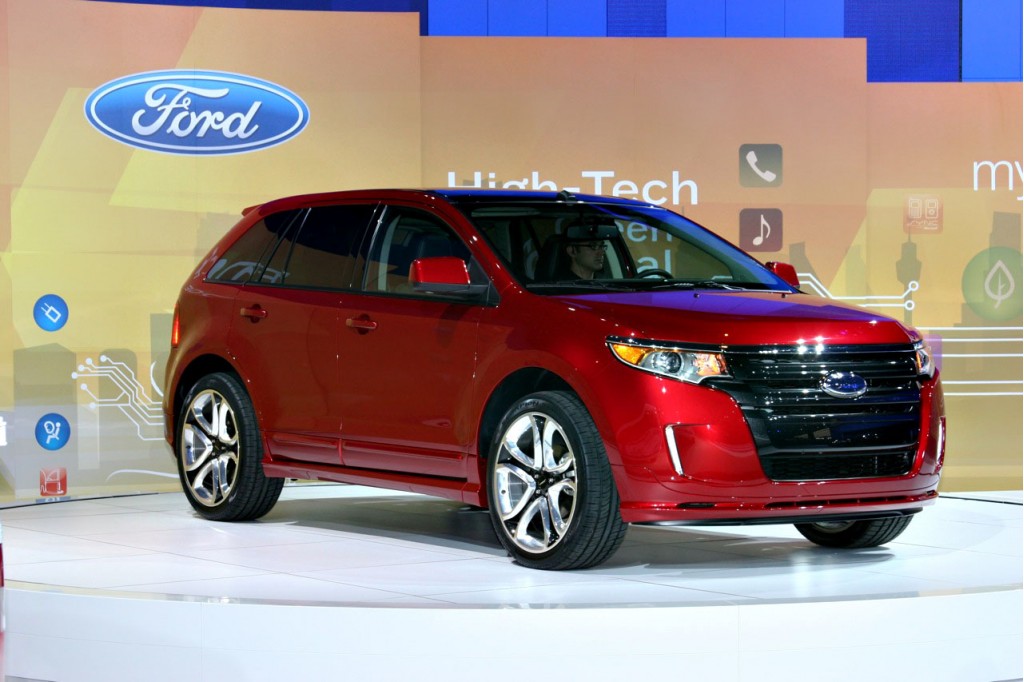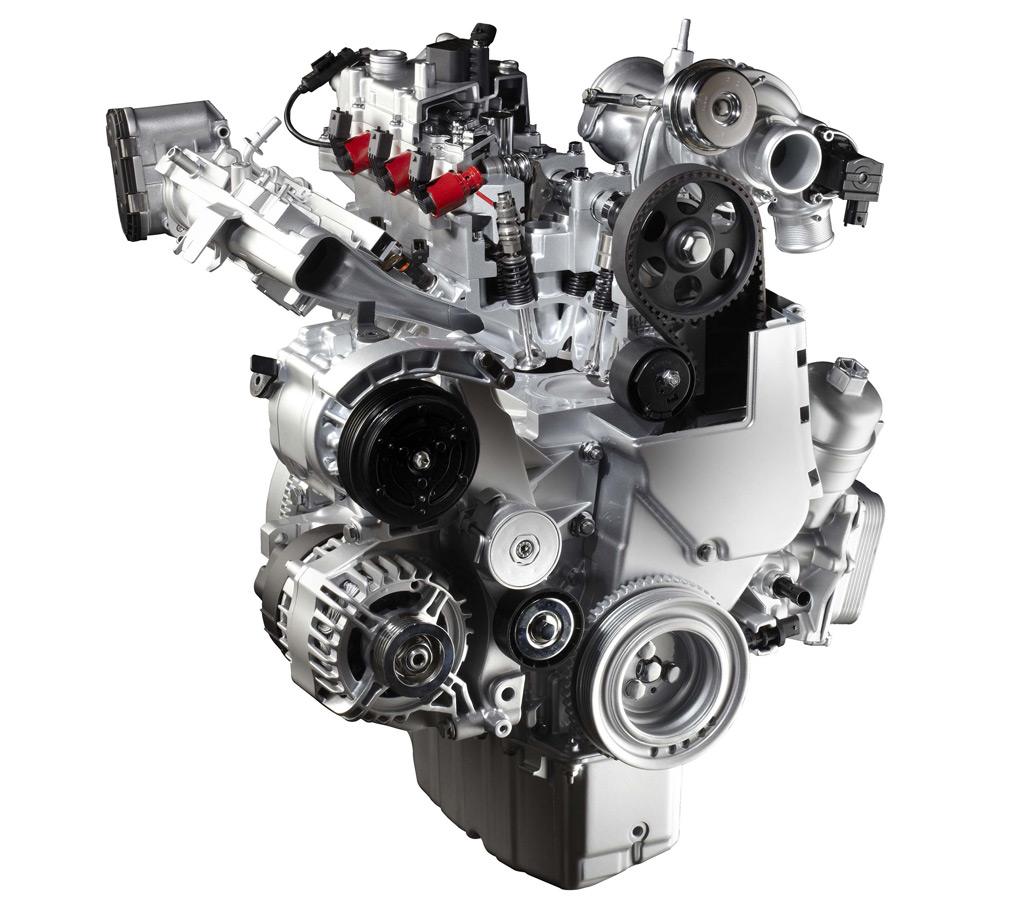At December's Los Angeles Auto Show, Hyundai made a big splash by saying it would no longer offer V-6 engines in its Sonata midsize car or its Tucson compact crossover. Instead, it replaced them with higher-performance, more fuel-efficient four-cylinder motors.
But Hyundai's just one of many makers boosting the four-cylinder into prominence. Data from a survey of 2009 sales shows that four-cylinder models rose from 52 to 62 percent of car sales, and were even fitted to a record 15 percent of light trucks sold.

2011 Chevrolet Cruze Los Angeles 2009

2011 Ford Edge

Ford Four-Cylinder EcoBoost Engine

2009 Los Angeles Auto Show

Fiat Multiair 1.4-liter engine
The percentages of share are important because overall sales plummeted more than 20 percent in 2009, compared to previous years. The engine mix, analyzed by Ward's Auto, reflects both carmaker decisions--a la Hyundai--and buyers' worries over future fuel prices.
Sweet spot: 2.0-3.0 liters
Slowly, engines are getting smaller. Specifically, engines of less than 3.0 liters are soaring. The 2009 total for sub-3.0-liter engines was 43 percent, against 33 percent just two years earlier and less than 30 percent over the ten model years from 2000 to 2009.
The sweet spot seems to be 2.0 to 3.0 liters, with engines of that size rising to a record 36 percent, an increase of fully 8 percent over the previous year. The very smallest engines, though--those of less than 2.0 liters--fell slightly to 7 percent of total sales.
More small fours coming
That number will rise significantly, however, with the launch of the 2011 Chevrolet Cruze, in which a 1.4-liter four replaces the 2.4-liter four in its predecessor, the 2010 Chevrolet Cobalt.
The new subcompact 2011 Ford Fiesta uses a 1.6-liter engine. And Ford will roll out new turbocharged, direct-injected EcoBoost engines in smaller sizes over the next three years. The revised 2011 Ford Edge crossover gets 230 horsepower from its 2.0-liter EcoBoost engine, with 20 percent better gas mileage than the V-6 of similar power it replaces.
Chrysler too will use its partner Fiat's new 1.4-liter engine within two years, in cars to replace its slow-selling and outmoded subcompact, the 2010 Dodge Caliber. Those small fours will employ Fiat's innovative MultiAir electrohydraulic valve system, for up to 10 percent higher mileage.
Big engines, small declines
For cars and trucks combined, engines larger than 3.0 liters still logged 57% of total U.S. vehicle sales. That reflects the reality that almost half the market is comprised of light trucks (minivans, crossovers, and SUVs) and full-size pickup trucks.
But the largest size categories still fell slightly as percentages of the total: 3- to 4-liter engines made up 29 percent (down 4 percent), 4- to 5-liter sizes represented 11 percent (down half a percent), and those over 5 liters were 17 percent of the total (down 2 percent).
Diesels, hybrids increase
Clean diesels almost doubled their share of sales, from 2.1 to 3.7 percent, reflecting new entries from Audi and BMW, and marketing campaigns from Volkswagen and Audi on their TDI offerings. Most light-duty diesels, however, are still fitted not to cars but trucks.
Hybrids too rose, from 2.1 to 2.4 percent of sales. (Figures may vary; a different survey puts the figure at 2.8 percent.)
And reflecting the growing number of vehicles that are capable of running on E85 ethanol as well as gasoline, flex-fuel vehicles grew slightly, from 7.4 to 7.9 percent.
Small is getting big
Regular readers will recognize we've frequently said future fuel efficiency gains will come in large part from much more efficient small gasoline engines.
The Ward's data simply adds more proof to the idea that one way to go green is to make smaller engines work harder to produce the same power. It's not the only way; hybrids, diesels, flex fuels, and upcoming electric cars all have their place too.
But while those alternative technologies get more play in the media, smaller conventional engines may do as much as any other single technology to raise fuel efficiency and--hopefully--reduce our overall oil consumption.













